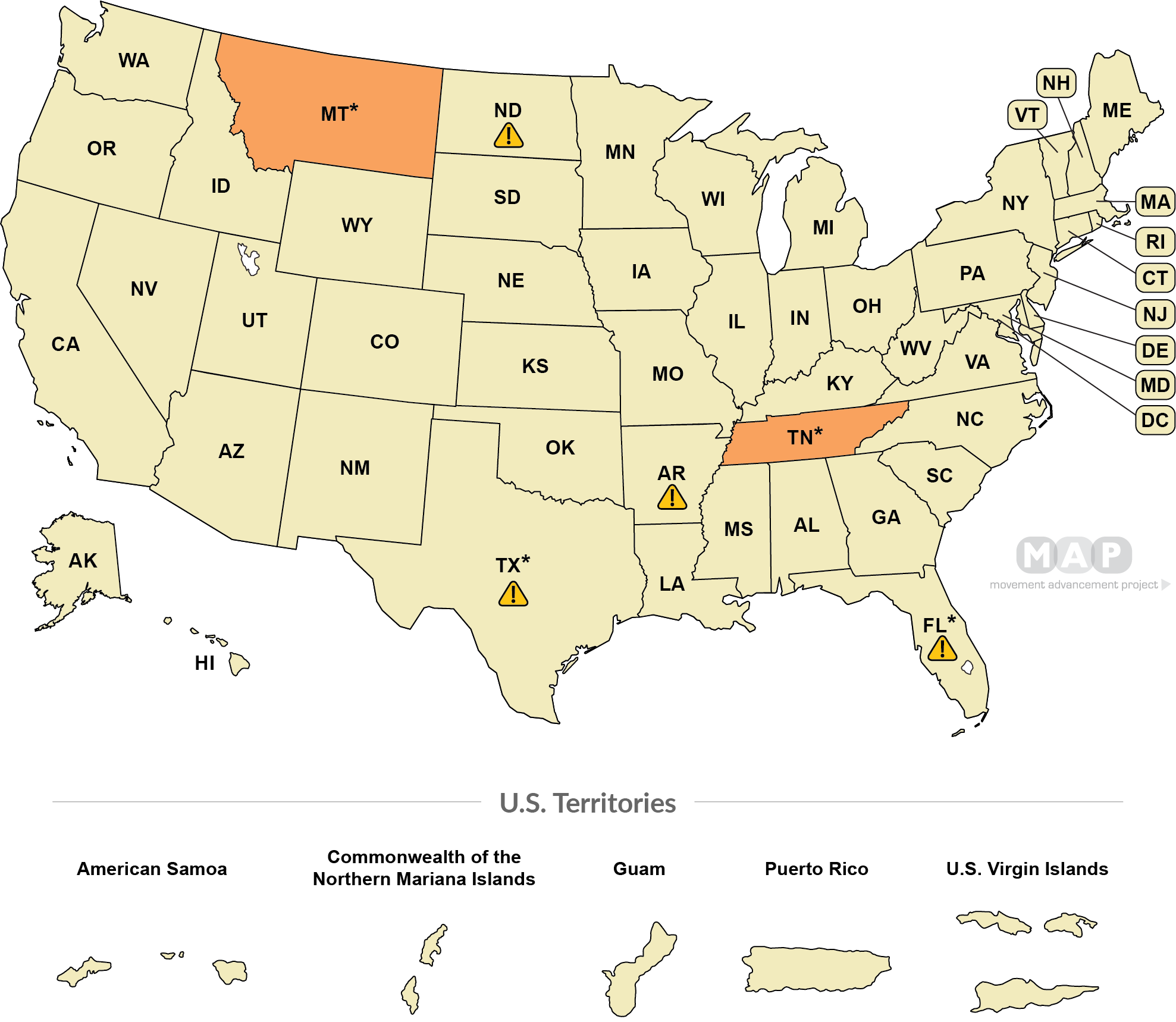Drag is an art form dating back centuries and is a vital part of LGBTQ culture and history. While state laws restricting gender-based dress also date back to at least the 1800s, 2023 brought a resurgence of efforts to limit free speech and expression in the form of drag performances. These attacks are part of a much broader and coordinated effort attacking gender expression, transgender people, and the LGBTQ community more broadly. For more, read MAP's ongoing series
Under Fire: The War on LGBTQ People in America.
-
State law explicitly restricts drag performances
(2 states)
-
State law does not explicitly restrict drag performances
(48 states , 5 territories + D.C.)
-

State has law about "adult" performances that could be used to target or restrict drag
(4 states)
*Notes:--Florida's law targeting drag is currently unenforceable due to a temporary block on the law issued June 2023. The state has already appealed the decision. --Montana's law restricting drag performances is currently unenforceable due a federal court order issued July 2023. --Tennessee's law restricting drag performances is currently unenforceable due to a federal court order issued March 2023, and a subsequent decision ruling the law unconstitutional. The state has already appealed the decision.--Texas' law targeting drag is unenforceable due to a federal court decision ruling the law unconstitutional in September 2023. The state may appeal the decision.--This map will be updated as these cases progress.Recommended citation:Movement Advancement Project. "Equality Maps: Restrictions on Drag Performances."
https://www.mapresearch.org/equality-maps/criminaljustice/drag_restrictions. Accessed 01/04/2026.
Percent of Adult LGBTQ Population Covered by Laws
*Note: These percentages reflect estimates of the LGBTQ adult population living in the 50 states and the District of Columbia. Estimates of the LGBTQ adult population in the five inhabited U.S. territories are not available, and so cannot be reflected here.
2 % of LGBTQ population lives in states with laws restricting drag performances
98 % of LGBTQ population lives in states with no law restricting drag performances
16 % of the population lives in states with laws about "adult" performances that could be used to target or restrict drag



